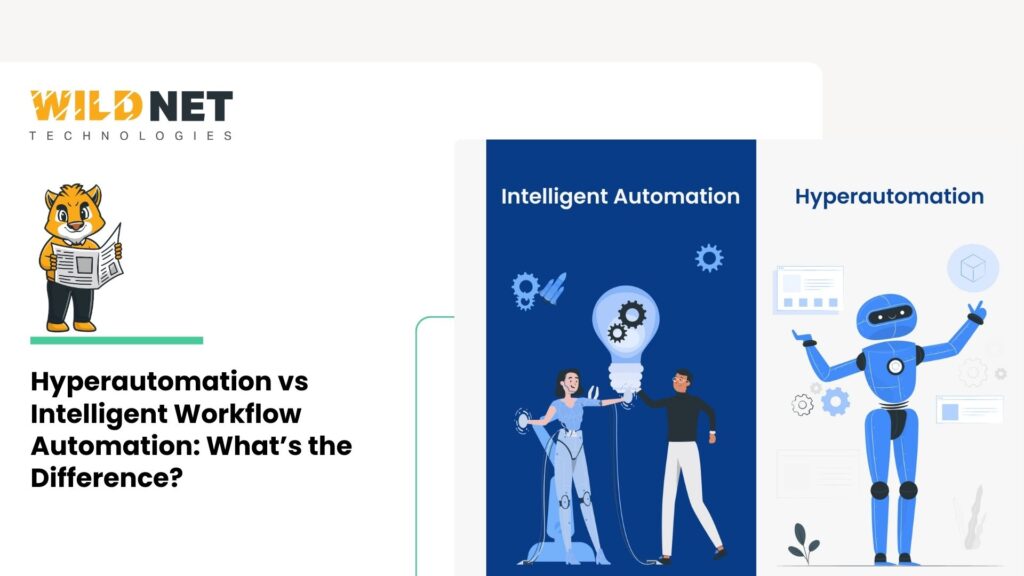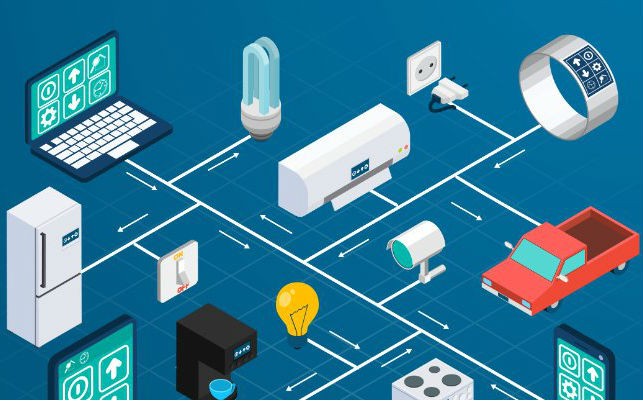TL;DR Summary
With this newsletter, we enlighten you about hyperautomation, intelligent workflow automation and workflow automation to help you choose the best one for your business.
Hyperautomation helps with complete automation & innovation; intelligent automation helps with automating some processes, and workflow automation is the automation of basic tasks.
Key Takeaways
> Want to automate the process and make your business smart?
> Artificial intelligence automation is the need of the hour but every business needs it in a custom amount.
> Read this LinkedIn Newsletter to understand automation, its implications and implementations.
Table of Contents
- A few facts about Hyperautomation vs Intelligent Automation
- Hyperautomation vs Intelligent Automation: The Introduction
⤷ What is Workflow Automation?
⤷ Key Use Cases of Simple Workflow Automation
⤷ What is Intelligent Automation?
⤷ Key Use Cases of Intelligent Workflow Automation
⤷ Key Use Cases of Hyperautomation
- Hyperautomation vs Intelligent Automation: The Comparison
- Hyperautomation vs Intelligent Automation: Real World Applications
⤷ Banking
Everybody wants a little bit of automation in their lives because it grants the user the time free from redundant tasks.
And the imaginative skills of AI can further boost the quality of work, which is why businesses are jumping onto the automation wagon.
But the hyperautomation vs intelligent automation debate has got the corporates confused, as they wish to make the best choice.
In this LinkedIn newsletter, we will clear all doubts related to the hyperautomation vs intelligent automation dilemma.
A few facts about Hyperautomation vs Intelligent Automation
- Automation has improved productivity for 66% and jobs for 90% of knowledge-based workers.
- As per 83% of the IT professionals, automation is crucial.

Fig 1: A graphical representation of the IT folks expressing their belief in automation.
- The industrial automation market is expected to reach USD 256.02 billion globally in 2025.
- By 2034, it is expected to reach USD 569.27 billion.
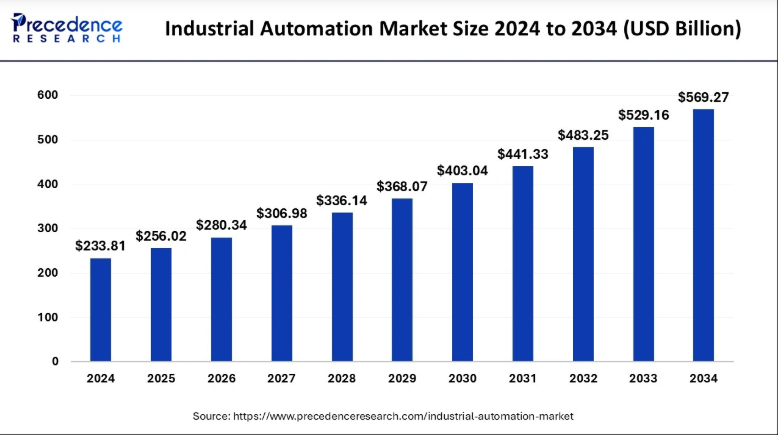
Fig 2: a graphical representation of industrial Automation’s market size from 2024 to 2034. [Source: Precedence Research]
- The automation market is dominated by the APAC (Asia-Pacific), followed by North America and Europe.
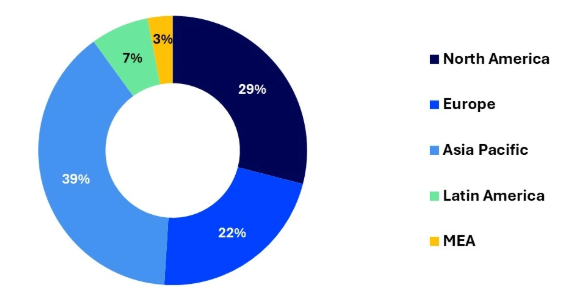
Fig 3: A pie chart representation of the Automation market coverage across the globe in 2024. [Source: Precedence Research]
Hyperautomation vs Intelligent Automation: The Introduction
There are basically three types of automation, and we generally refer to its basic form, but by knowing all three of them, better selection can be made by businesses.
What is Workflow Automation?
Simple Workflow Automation is used to denote the usage of automation technology to simplify tasks.
RPA, or Robotic Process Automation, for example, is used to collect data from webpages and applications when APIs are not available.
Key Use Cases of Simple Workflow Automation
Example: Imagine a shop where every time a customer places an online order, the system:
- Sends an email confirmation,
- Updates the inventory,
- Notifies the delivery guy.
That’s workflow automation — everything follows a set path.
Fig 4: A graphical representation of the use cases of Workflow Automation.
You can use workflow automation for non-repetitive tasks,
- Data Entry & Processing
- Email Management
- Expense Management
- Inventory Management
- IT Process Automation
What is Intelligent Automation?
Intelligent automation or intelligent work flow automation blends AI or artificial intelligence and RPA together.
Intelligent Automation (IA) = RPA + AI/ML
RPA takes care of simple tasks by following predefined steps, while AI helps in the handling of cognitive or intellectual tasks using the training models.
Intelligent workflow Automation is good for tasks that involve judgment, decision-making, or messy data.
AI-powered Intelligent Document Processing, or IDP, for example, can be used to extract useful information from invoices, which can then be filled into programs without APIs.
Key Use Cases of Intelligent Workflow Automation
Example:
Now imagine the shop has an intelligent assistant that can think. It not only follows steps but can also:
- Read messy handwritten orders using AI,
- Predict what customers might want next,
- Handle unusual requests intelligently.
This is IA (Intelligent Automation), which combines workflow automation (RPA) with artificial intelligence (AI) or ML to handle both routine and brainy tasks.
Fig 5: A graphical representation of the Key use cases of Intelligent Automation.
Below are the use cases of intelligent workflow automation,
- Process Unstructured Data
- Automation of Judgement-based Tasks
- Detection & Adaptation of Business and Customer Changes
- Resource and KPI Planning
- Expectation Management
- Internal Course Adjustment
What is Hyperautomation?
Hyperautomation is one step ahead of the above two, i.e., Work flow Automation and Intelligent Workflow Automation, as it includes the usage of all the advanced automation tools to automate everything possible in the business, end-to-end.
Thus, hyperautomation is a cumulation of,
- Artificial Intelligence
- RPA
- Other tools (Workflow orchestration, Decision rules, Process Mining, Chatbots, NLP, and iPaaS and iBPM or intelligent business process management)
Via hyperautomation, businesses streamline and automate their business processes completely (end-to-end) and become fully digital, efficient, and future-ready.
Key Use Cases of Hyperautomation
Example:
Now let’s say the shop uses every tool available:
- Basic workflows
- AI decision-making
- Predictive analytics
- Process mining
- Real-time dashboards
- Even voice assistants like Alexa for taking orders
That’s hyperautomation, using all the advanced tools to automate everything in the business process automation.
Fig 6: A graphical representation of Use cases of Hyper Automation.
Wondering where you can use hyper-automation? We got you.
- Automated Cost Reduction
- Enhance Cybersecurity and Governance
- Seamless ROI Measurement of Automation
- Future Automation Prediction
- Streamlined Back-office and Customer-facing Operations
- Overall Improvement in Quality, Accuracy, Speed, and Efficiency
Whether you need business process automation, AI automation, home automation smart home, or more, you need to know the below differences first.
Hyperautomation vs Intelligent Automation: The Comparison
Now, it is time to learn how hyperautomation and intelligent automation differ from each other to help you align your business needs accordingly.
| Parameters | Hyperautomation | Intelligent Automation |
| End-to-end Automation | Yes, focusing on business processes holistically | Yes, focusing on particular tasks |
| Task Complexity | Simple and Complex | Advanced |
| Scalability | Highly scalable | Scalable |
| Security | Yes | Yes |
| Productivity | Yes, but more beneficial | Yes, comparatively less beneficial |
Fig 7: A tabular comparison of Hyperautomation vs Intelligent Automation.
If you would like to understand these parameters in detail, we have curated in-depth explanations as well.
Hyperautomation vs Intelligent Automation: End-to-End Automation
End-to-end automation is needed in either dangerous and hazardous workplaces or in workplaces that are troubled by human errors.
It can also be leveraged to reduce the business cost and time taken to complete it.
- Hyperautomation handles it in a holistic manner by automating various interconnected processes to render an end-to-end view of the company’s operations.
- Intelligent workflow automation, on the other hand, focuses on sub-tasks within a larger process.
Result
Choose hyperautomation for enterprise organizations for overall business automation and intelligent automation for automating a few processes.
Hyperautomation vs Intelligent Automation: Task Complexity
Depending upon the task complexity, the two can be segregated.
- Hyperautomation can handle simple (RPA), complex (ML, AI, & more) and advanced tasks using latest technologies and tools like Process Mining, Chatbots, NLP, and iPaaS.
- However,, Intelligent workflow automation can only work for AI-driven semi-structured and structured tasks but may lack proper multiple task management unless combined with other tools (like iBPMS)
Result
Choose hyperautomation for using the latest technologies and intelligent workflow automation for automating current business operations or a part of it.
Hyperautomation vs Intelligent Automation: Scalability
Scalability is a vital ask of every business because consumer demands and market trends change rapidly in the AI era.
- Firstly, Hyperautomation is highly scalable, as it can quickly identify, assess, and then automate a lot of business processes.
- However, Intelligent automation is also scalable, but its goal is directed towards the automation of individual tasks.
Result
Choose hyperautomation if you need the ultimate scalability.
Hyperautomation vs Intelligent Automation: Security
Security is also important, as the data is being shared online, and it needs the required protection to keep it private.
Result
Both hyperautomation and intelligent automation boost security, and thus both fare roughly the same in terms of cybersecurity.
Hyperautomation vs Intelligent Automation: Productivity
Business productivity is the final parameter that helps businesses decide which type of automation to choose.
- Hyperautomation, being more sophisticated, can deliver the highest productivity in general cases.
- Intelligent automation generally offers a little less productivity than Hyperautomation, besides in some cases, where integration of all business operations is not possible and only a few business processes need workflow automation, Intelligent automation can deliver higher productivity.
Result
So, choose the automation type as per your business processes to boost their productivity.
We hope this comparison has given you enough information to align your business needs with one of the automation types.
Hyperautomation vs Intelligent Automation: Real World Applications
It’s time to show how hyperautomation and intelligent automation are changing the real world across various industries.
Healthcare
The healthcare industry benefits from both intelligent workflow automation and hyperautomation to boost the levels of patient care and administrative tasks.
Be it,
- Processing structured and unstructured patient records, insurance forms and lab reports,
- Inventory management,
- Vendor management,
- New drug discovery,
- Customized drug discovery: they can do it all and more while complying with HIPAA, GDPR and other compliance regulations.
Banking
The banking sector can also use both, as they require in-depth analysis for risk management, fraud detection and payments.
The automation can also help in market trend prediction so that the banking sector can align themselves accordingly.
Retail Operations
The retail sector has a lot of variables which hamper the perfect flow of business operations and irritate customers.
With both hyperautomation and intelligent automation,
- Marketing,
- Customer Experience,
- Supply Chain Management,
- Mixed Realities, and more can be easily catered to.
So, as you can see, businesses choose both hyperautomation and intelligent automation to ensure AI readiness and a huge competitive edge in their industry.
Hyperautomation vs Intelligent Automation: The Future Trends
The significance of the automation is going to skyrocket as the demand for better products and services at affordable pricing increases due to never-ending competition.
Plus, AI inclusion uplifts a brand’s digital solutions and garners the best possible user experience while imparting an unbelievable competitive edge.
All of it can be achieved via digital transformation of your current business ecosystem.
Here are some of the automation trends:
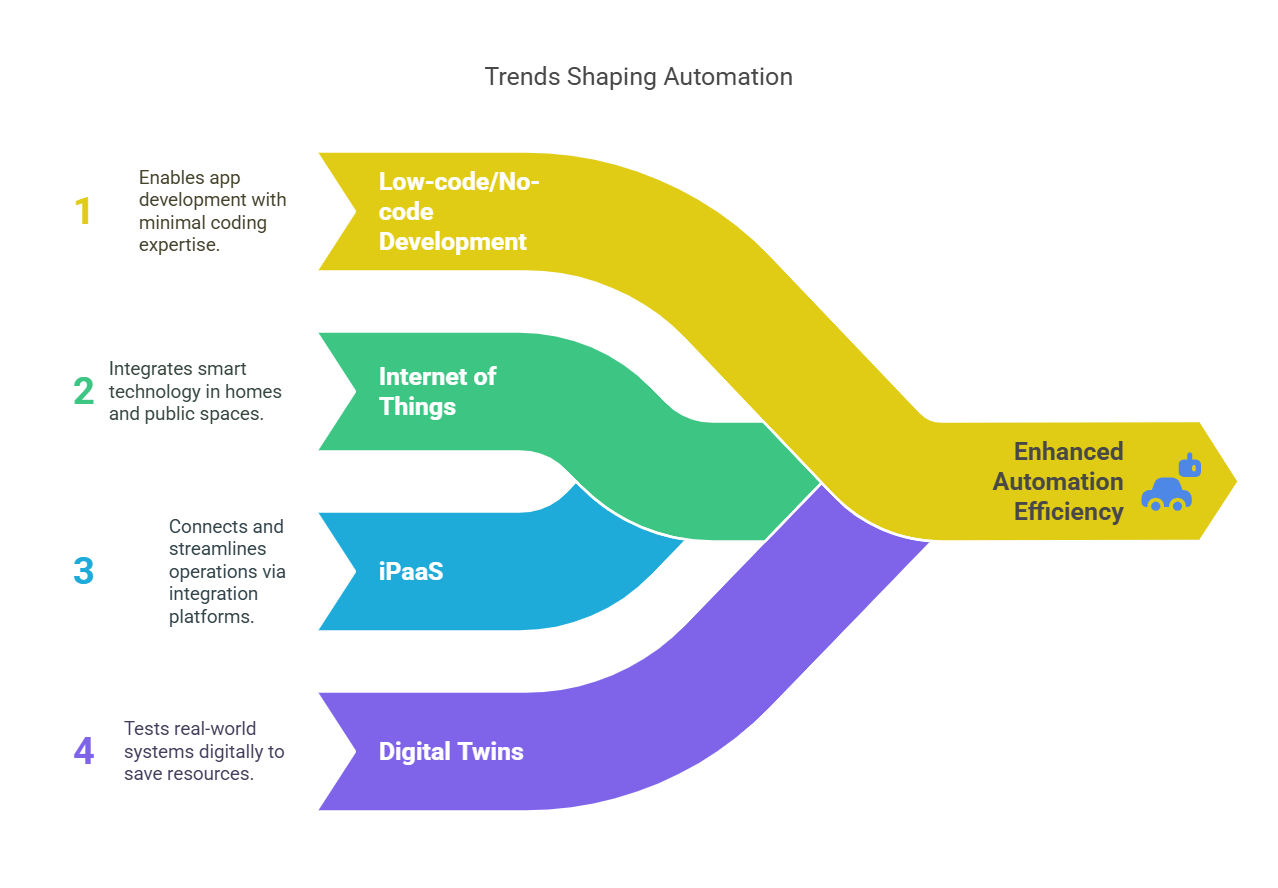
Low-code/No-code Development
Now using LC/NC development, websites and apps can be made with minimum to no coding knowledge.
Internet of Things
Smart homes, offices and public spaces will be in demand soon, and they will need a combination of varied automation processes.
Integration Platform as a Service, or iPaaS
iPaaS, or integration platform as a service, is one of the in-demand services because it helps in streamlining various operations and connecting them together as one.
Digital Twins
Digital twins are gaining traction as they allow a real-world system to be tested in the digital world.
It is done by creating a digital replica and then letting it face real-world-inspired scenarios and tests.
It saves a lot of money and time that would have been normally consumed by the R&D department during an innovation cycle.
Agentic AI Or AI Agents
Agentic AI is the new kid in smart AI systems that can take action on their own without being told what to do.
Platforms like Deloitte’s Zora or EY’s Agentic AI are already helping businesses automate decision-making like never before.
If you wish to leverage these future trends, your business will need hyperautomation and intelligent automation.
Conclusion
We hope that the above newsletter has helped you understand the levels of automation your business can imbibe and the results of them.
Each industry can benefit uniquely, and every organization can use automation as per their requirements.
So, try automation now, when it is not a market mandate, to leave your competition behind without hampering your brand image.
If you are looking for an AI and automation consultant…. Scroll a little more.
Wildnet Technologies is a leading AI and software consultancy in India that is helping its clients with digital transformation, be it new, revamped or automated websites, apps and custom software.
If your business wishes to hire a software consultant on a contractual basis, we do that too.
For more information,
> Fintech Software Trends: The Emergence of Low-Code Development
> AI-Driven Web Development: The Future of Web Development Services
> Grok 3 AI vs. ChatGPT vs. DeepSeek AI: Which AI Reigns Supreme?
Connect with us now at info@wildnettechnologies.com and experience the power of automation.
FAQs
FAQ 1: What are the core components of hyperautomation?
Ans: The core components of hyperautomation are as follows:
- Artificial Intelligence (AI)
- Robotic Process Automation (RPA)
- Integration Platform as a Service (iPaaS)
- Intelligent Business Process Management (iBPMS)
FAQ 2: How does intelligent automation differ from traditional automation?
Ans: Traditional automation focuses on repetitive and rule-based tasks, while intelligent automation uses AI tools & technologies to bring value addition to routine processes via automation.
So, if your business wishes to leverage ML (machine learning), Computer Vision, Natural Language Processing (NLP) and other AI technologies, it will need intelligent automation.
FAQ 3: How is hyperautomation different from regular automation?
Ans: Regular automation can handle simple tasks that have predefined rules and do not require extra or innovative thinking.
But if your business needs to innovate something or automate the whole business processes, then it needs hyperautomation.
Because gone are the days when there was an immense budget for physical trials and testing, as now AIs can help emulate a real-world object way before it is actually modelled in real life.
This saves a lot of time and resources.
FAQ 4: What kind of hyperautomation platform should we choose?
Ans: A hyperautomation platform which can offer multiple automation tools and integration with various AIs & third-party tools so that a business can use it in a plug-n-play fashion.
FAQ 5: How can Wildnet Technologies help my business with Automation?
Ans: Wildnet Technologies is a leading software consulting company in India that has helped more than 4100 clients with their digital transformation via 8000 successful projects.
Be it a new website, app, custom software, or an AI power-up, our software consultants first understand the client’s ask and then recommend the best possible transformation.
We have been helping not only Fortune 500 companies but also mid-sized businesses and startups.
And we ensure that the legacy systems of our clients stay connected with the upgraded systems, if needed.
